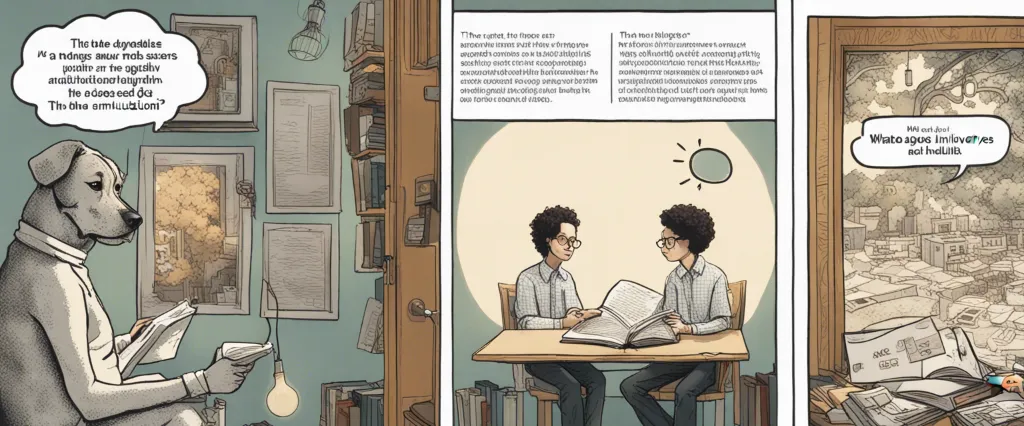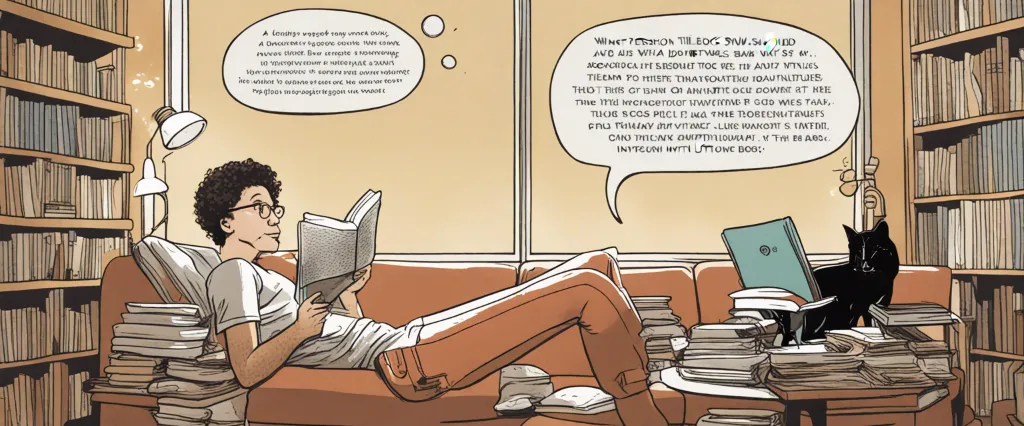In his captivating collection of essays, “What the Dog Saw and Other Adventures,” acclaimed journalist and author Malcolm Gladwell explores the fascinating complexities of the human mind and the peculiarities of human behavior. With his characteristic curiosity and intellectual rigor, Gladwell investigates a diverse range of subjects, offering insightful reflections and captivating stories that uncover the hidden patterns and unexpected connections that shape our world. From exploring the art of ketchup and the secrets of Cesar Millan’s dog training techniques to dissecting the failed market predictions and unraveling the mysteries of successful entrepreneurs, Gladwell’s thought-provoking narratives shed light on the intricate nuances that define our society. As a distinguished staff writer at The New Yorker and a bestselling author of several acclaimed books, including “Outliers” and “Blink,” Gladwell’s distinctive storytelling style and extraordinary ability to uncover the extraordinary within the ordinary make “What the Dog Saw and Other Adventures” a thought-provoking and entertaining read.
Chapter 1: Observation and Discovery
In Chapter 1 of “What the Dog Saw and Other Adventures” titled “Observation and Discovery,” Malcolm Gladwell explores the role of observation and its importance in unlocking hidden truths and breakthroughs in various fields. Through a series of intriguing anecdotes, Gladwell illustrates the power of keen observation and highlights how it can lead to surprising discoveries.
Gladwell begins with the story of Cesar Millan, known as the “dog whisperer,” who possesses an exceptional ability to decode canine behavior and establish control over unruly dogs. Millan’s skill lies in his attention to subtle cues, body language, and keen observation of the animals. Similarly, Gladwell discusses the expertise of Alexsandr Romanovich Luria, a neuropsychologist who employed meticulous observation to understand how the brain functions and investigate extraordinary mental abilities in patients.
The chapter further delves into the field of forensic science, focusing on the remarkable work of the late Edmond Locard, a French forensic scientist. Locard emphasized the importance of careful observation at crime scenes and developed the notion that every interaction leaves traces behind. Known as “Locard’s Exchange Principle,” this concept revolutionized forensic investigation by providing crucial insights into gathering evidence.
Gladwell also presents the story of how therapists discovered the link between autism and the MMR vaccine by observing and documenting shifts in behavior among their patients. This observation led to a controversial debate about the vaccine’s potential role in triggering autism, highlighting the criticality of observation in identifying patterns and alerting the scientific community to potential correlations.
Overall, Gladwell highlights the often-underestimated power of observation in unraveling mysteries, gaining insights, and making groundbreaking discoveries across various fields, reminding us of the importance of keen observation in understanding the world around us.
Chapter 2: The Power of Unconventional Thinking
Chapter 2: The Power of Unconventional Thinking, in Malcolm Gladwell’s book “What the Dog Saw and Other Adventures,” explores the concept of intuition and how it can be harnessed to make effective decisions.
Gladwell starts the chapter with the story of John Gottman, a psychologist who developed a unique method to predict the likelihood of a couple’s divorce simply by observing their interactions for a few minutes. Gottman’s approach involved focusing on specific cues and patterns, such as facial expressions and body language, which provided valuable insights into the dynamics of a relationship. His unconventional thinking and ability to identify subtle signals that others might overlook allowed him to make accurate predictions.
Gladwell introduces the concept of “thin-slicing,” which refers to the ability to make quick judgments or decisions based on limited information. He explores how experts in various fields, such as a food tester for a major food company and a tennis coach, can gather crucial information and make accurate assessments within seconds through their intuitive and unconventional thinking.
Furthermore, Gladwell emphasizes the importance of experience and expertise in honing one’s intuition. He discusses the story of Gary Klein, a fire chief who relied on his vast experience to make split-second life-or-death decisions in dangerous situations. Klein’s ability to trust his gut instincts, developed through years of practice, allowed him to make crucial calls when facing complex and ambiguous scenarios.
The chapter highlights the power of unconventional thinking and the role of intuition in decision-making. Gladwell suggests that by developing expertise and understanding the cues and patterns that go unnoticed by others, people can tap into their own intuitive abilities to make more informed and effective choices.
Chapter 3: The Psychology of Human Behavior
Chapter 3: The Psychology of Human Behavior is a thought-provoking exploration of the underlying motivations and subconscious factors that drive our actions and decisions. Malcolm Gladwell, in his book What the Dog Saw and Other Adventures, examines various experiments and case studies to shed light on the complexity of human behavior.
Gladwell begins the chapter by discussing the Milgram experiment, conducted by Stanley Milgram in the 1960s. The experiment aimed to understand why seemingly normal individuals could commit morally questionable acts under the influence of authority figures. Milgram’s shocking findings revealed that when obedience to authority becomes more prominent than personal morality, individuals are willing to inflict severe harm on others.
The author then delves into the concept of moral licensing, which explores how people sometimes use a good act or behavior to rationalize their subsequent bad behavior. Gladwell illustrates this phenomenon through the example of Rachel Aviv’s investigative journalism on child abuse cases among highly respected pediatricians. Aviv’s research suggests that these doctors, after being actively involved in saving children’s lives, often felt morally licensed to commit egregious acts of abuse, as they believed that their good deeds outweighed their transgressions.
Similarly, Gladwell explores the concept of cognitive dissonance, wherein people experience mental discomfort when their beliefs or attitudes contradict their actions. He substantiates this idea by discussing the case of Enron, a company whose top executives displayed an immense gap between their publicly projected image of integrity and the unethical behaviors they engaged in privately.
Ultimately, Gladwell reflects on the complexities of human behavior, highlighting the influence of situational factors, the subconscious mind, and external pressures on our decision-making processes. This chapter prompts readers to question the true nature of our actions and the underlying psychological mechanisms that govern our behavior.
Chapter 4: Experts and Expertise

Chapter 4 of “What the Dog Saw and Other Adventures” by Malcolm Gladwell is titled “Experts and Expertise.” In this chapter, Gladwell explores the concept of expertise, highlighting the idea that being an expert in a particular field does not always guarantee success or accuracy.
The chapter begins with the story of a psychologist named John Gottman, who claims to have developed a method for predicting the success or failure of a marriage. Gottman analyzes the way couples interact, focusing on indicators such as facial expressions and tone of voice. However, Gladwell points out that despite Gottman’s expertise and high accuracy rate, he cannot predict the exact reasons behind a marriage’s success or failure. This highlights the limitations of expertise in certain areas.
Gladwell then delves into the field of art interpretation and discusses how experts can sometimes disagree on the authenticity of a piece. He cites the example of a famous art historian who confidently declared a forgery as genuine, underscoring the fallibility of experts.
The chapter also explores the case of an expert known as “the super-recognizer” who has an exceptional ability to remember faces. While this talent is invaluable in certain situations, it does not necessarily make this individual an expert in recognizing liars, as Gladwell demonstrates through a study conducted by Mark Frank.
To conclude, Gladwell challenges the notion that expertise is always reliable, emphasizing that experts have limitations and that their knowledge is often specific to their respective domains. He highlights the need for humility and nuance when relying on expert opinions.
Chapter 5: Interpreting Social Phenomena
Chapter 5 of “What the Dog Saw and Other Adventures” by Malcolm Gladwell explores the challenges and complexities of interpreting social phenomena. Gladwell starts by introducing the concept of moral licensing, which involves people engaging in good behavior to then justify engaging in subsequent bad behavior. He discusses a study that examined how giving white people a positive experience with a black man leads them to subsequently demonstrate more subtly racist behaviors through unconscious bias.
The chapter then delves into the story of economist Albert O. Hirschman, who examined the phenomena of exit, voice, and loyalty in organizations. Hirschman argued that when people are dissatisfied with an organization, they can either exit it, voice their concerns, or demonstrate loyalty by sticking with the organization despite its flaws. Gladwell provides examples of how these concepts can be relevant in various contexts, such as customers sticking with a dying airline or citizens protesting against a failing government.
Gladwell takes a closer look at one particular example of loyalty: the fashion brand Hush Puppies. He explains how the popularity of Hush Puppies seemingly faded overnight but was later revived due to a transformative event at a self-described “biker party” in Brooklyn. Gladwell explores how social influence and trends can shape consumer behavior and revive dying brands.
The chapter concludes with an examination of the broken windows theory, which claims that small signs of disorder in a neighborhood can lead to an increase in crime. Gladwell presents research challenging the validity of this theory and emphasizes the importance of understanding the complexities of social phenomena and avoiding oversimplification.
In summary, Chapter 5 of “What the Dog Saw and Other Adventures” explores various social phenomena, including moral licensing, exit, voice, and loyalty, the rise and fall of brands, and the broken windows theory. It encourages readers to question simplistic interpretations and consider the intricate factors that contribute to social behavior and trends.
Chapter 6: Understanding Human Decision-Making
Chapter 6 of “What the Dog Saw and Other Adventures” by Malcolm Gladwell delves into the intricacies of human decision-making. The chapter focuses on the work of psychologists and economists who seek to understand the factors that influence our choices and actions.
Gladwell begins by presenting the infamous Challenger space shuttle disaster of 1986. He explores the concept of “normalization of deviance,” wherein individuals become accustomed to bending the rules or overlooking potential risks until a catastrophe occurs. Gladwell uses this example to highlight the fallibility of human decision-making and the need to analyze the underlying thought processes.
The chapter then delves into the work of Nobel laureate Daniel Kahneman and his fellow psychologist Amos Tversky. They proposed that humans possess two thinking systems: the fast and intuitive system and the slow and deliberate system. The intuitive system is prone to biases and shortcuts that can lead to flawed decision-making. Gladwell illustrates this using various examples, such as the Pepsi Challenge and the breast cancer screening paradox.
Moreover, Gladwell introduces the concept of “thin-slicing,” the ability to make accurate judgments based on limited information. He discusses the research of psychologist John Gottman, who can predict the longevity of marriages based on brief observations. However, Gladwell emphasizes the limitations of thin-slicing as it can lead to errors when dealing with complex scenarios.
To conclude, Chapter 6 highlights the complexities of human decision-making, showcasing how biases, shortcuts, and limited information can influence our choices. Through the exploration of various studies and examples, Gladwell underscores the need for a deeper understanding of decision-making processes to mitigate potential errors or disasters.
Chapter 7: Factors of Success and Failure
Chapter 7 of Malcolm Gladwell’s book What the Dog Saw and Other Adventures is titled “The Talent Myth: Are Smart People Overrated?” In this chapter, Gladwell explores the notion of talent and the factors that contribute to success or failure in various fields.
Gladwell introduces the concept of the “talent mindset,” a belief that success is primarily determined by innate abilities or talent. He argues that this mindset often overlooks crucial factors such as opportunity, practice, and environment in shaping an individual’s achievements. To support his proposition, Gladwell presents various case studies and examples.
One such example is the story of Enron, the energy company that collapsed due to fraud and unethical practices. Enron had a reputation for hiring only the most talented individuals, using a rigorous evaluation process called the “Rank and Yank” system. However, Gladwell argues that Enron’s focus on talent alone created a toxic competitive environment and disregarded important qualities like teamwork and integrity.
Gladwell also analyzes the success of Canadian hockey players and attributes it to the “relative age effect.” He explains that those born earlier in the year have a significant advantage because they are older and more physically mature, leading to better opportunities for training and development. This effect influences selection processes in early developmental stages, which perpetuates the notion of innate talent.
Furthermore, Gladwell delves into the world of teaching and schools, highlighting the importance of smaller class sizes and emphasizing the impact of individual attention on student success. He argues that standardized tests and curriculum effectiveness measurements often miss these vital factors.
Ultimately, Gladwell’s chapter challenges the belief that talent alone is the primary driver of success. He presents evidence that factors such as opportunity, practice, environment, and even luck play substantial roles in shaping outcomes. By widening our perspective and considering other variables, we gain a more comprehensive understanding of the factors contributing to individual achievements.

Chapter 8: Challenging Conventional Wisdom
Chapter 8: Challenging Conventional Wisdom of Malcolm Gladwell’s book “What the Dog Saw and Other Adventures” challenges the idea of conventional wisdom and explores how it can often lead to misleading conclusions. Gladwell discusses several examples where conventional wisdom has been proven wrong and suggests that we need to reevaluate our assumptions.
First, Gladwell examines the case of the Challenger disaster in 1986. He argues that the accident occurred because people blindly adhered to conventional wisdom, assuming that the O-rings on the rocket boosters would function properly in cold weather. This tragic event highlights the dangers of unquestioningly accepting common beliefs without critical analysis.
In another example, Gladwell challenges the notion of the benefits of mammograms in breast cancer screening. He points out that the screenings often result in false positives, which can lead to unnecessary treatment and anxiety for patients. By questioning the conventional wisdom regarding mammograms, Gladwell suggests that a more nuanced approach to screening may be necessary.
Furthermore, the author brings up the story of New York City’s efforts to reduce crime in the 1990s, specifically the famous “broken windows” theory. Critics argue that the reduction in crime was not solely due to cracking down on minor offenses, as the conventional wisdom suggests. Instead, they believe the decrease in crime can be attributed to other factors such as an aging population and improved economic conditions.
Gladwell concludes that we should be cautious in blindly accepting conventional wisdom. He argues that by challenging preconceived notions and seeking alternative perspectives, we can gain a deeper understanding of complex issues and make more informed decisions. Ultimately, Gladwell encourages readers to think critically and question the status quo in order to embrace a more nuanced approach to problem-solving and decision-making.
After Reading
In conclusion, Malcolm Gladwell’s book “What the Dog Saw and Other Adventures” is a collection of thought-provoking essays that explore various aspects of human behavior and society. Through his engaging storytelling and in-depth research, Gladwell offers unique perspectives on topics like the secrets to success, the true nature of genius, and the complexities of human communication. By presenting a wide range of real-life stories and case studies, he challenges conventional wisdom and encourages readers to rethink their perceptions. “What the Dog Saw and Other Adventures” is a captivating read that leaves readers with a deeper understanding of the hidden forces that shape our lives and the world around us.
1. “Outliers: The Story of Success” by Malcolm Gladwell – This book, written by the same author, explores the factors that contribute to exceptional success in various fields. It examines how cultural, societal, and personal circumstances can shape an individual’s journey to achieve greatness.
2. “Blink: The Power of Thinking Without Thinking” by Malcolm Gladwell – In this captivating book, Gladwell delves into the concept of snap judgments and rapid decision-making. He uncovers the science behind intuition and explores how the mind can make accurate assessments in mere seconds.
3. Freakonomics: A Rogue Economist Explores the Hidden Side of Everything” by Steven D. Levitt and Stephen J. Dubner – Similar to Gladwell’s approach, this book combines provocative storytelling and economic concepts to shed light on the hidden side of everyday life. It offers unique insights into diverse topics, from the economics of drug dealing to the impact of education on crime rates.
4. The Tipping Point: How Little Things Can Make a Big Difference” by Malcolm Gladwell – Another captivating work by Gladwell, “The Tipping Point” investigates the factors that lead to sudden social change. By examining real-world examples, the author reveals how small actions and ideas can create significant transformations in society.
5. “Freakonomics Rev Ed: A Rogue Economist Explores the Hidden Side of Everything” by Steven D. Levitt and Stephen J. Dubner – A sequel to the previous book, this revised edition continues to explore unusual economic theories. The authors tackle new and thought-provoking topics, such as the impact of legalized abortion on crime rates and the secrets behind successful parenting.




